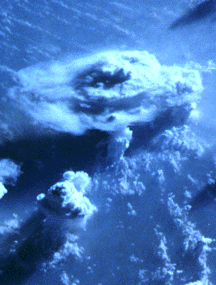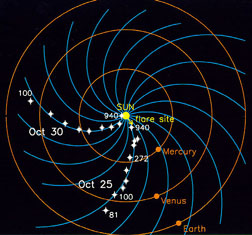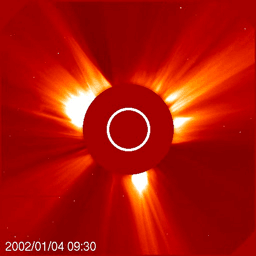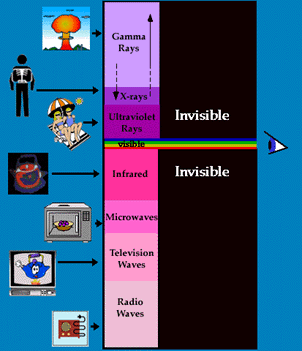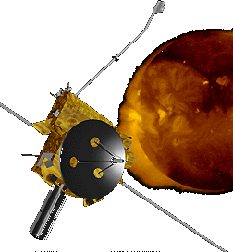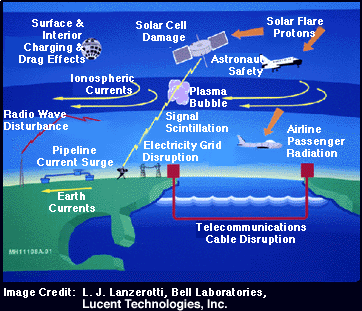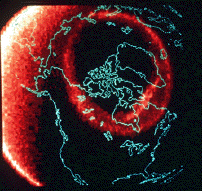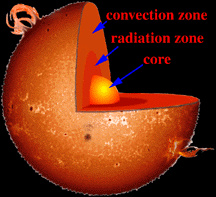Click on image for full size
Aris Multimedia Entertainment, Inc. 1994
Earth Weather vs. Space Weather
How is space weather similar to Earth weather? How are they different? Does space weather affect weather on Earth, and if so, how? What sorts of short term "weather" and longer term "climate" changes are there in space weather?
When we describe weather on Earth, we talk about several interrelated factors such as temperature, wind speed and direction, humidity, precipitation, barometric pressure, cloud cover, and so on. Similarly, when we speak of space weather there are several key values that we mention, such as the speed of the solar wind, particle density of electrons and protons, the strength and orientation of the IMF, and so on.
Weather on Earth varies from place to place and over time. The same is true for space weather. Space weather might be "stormy" in the vicinity of Mars while it is calm in the neighborhood of Jupiter. A CME aimed at Earth might disrupt space weather in our neck of the woods for a day or two, but could be followed by a period of less disturbed conditions. Changes in weather, both the Earth and space varieties, take place over a wide range of time scales. Some changes happen in matters of minutes and hours, others take days or weeks, and some span periods of years or longer.
Because heat from the Sun is the primary driver of weather on Earth, you might suspect that space weather has a strong influence on Earthly weather. Scientists believe that this is likely, but convincing evidence in support of this assumption has been difficult to come by. Although the Sun's brightness varies over the course of the 11-year sunspot cycle, the variation of output in the visible portion of the spectrum from the highest to the lowest point in the cycle is a slight 1/10th of one percent. However, there have been periods of extreme weather, such as a severe cold snap in the 1800's, that correspond with unusual periods in the solar cycle.


